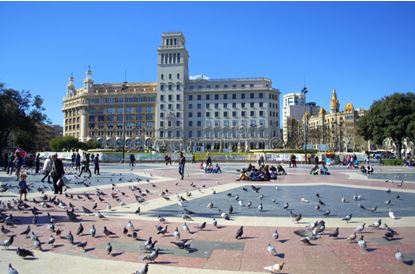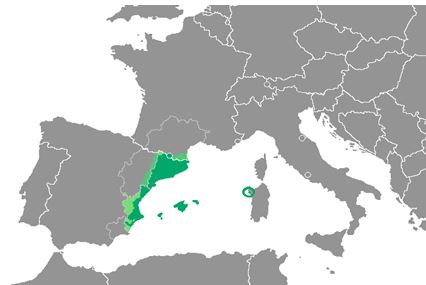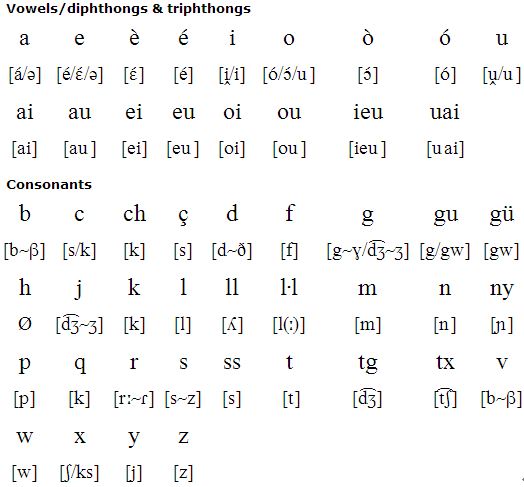Catalan Translation

Are you having trouble with finding a linguist for your Catalan to English translation?
It’s a good thing you found Target Language Translation Services. At Target Language Translation Services, our job is to give you the excellent and certified translation service money can buy. And give it to you promptly, trouble-free, and at a cheap price. Target Language Translation Services provides legal, medical, marketing, translation services as well as translation services in the Catalan language that deal with quality financial translations, transcription, technical and certified document translations, and other services industries may be interested in. Rest assured we would provide you with nothing short of the quality you expect from us.

Territories where Catalan is spoken and is official
Territories where Catalan is spoken but is not official
Territories where Catalan is not historically spoken but is official
About Catalan
Catalan is a Romance language spoken by about 9.5 million people. It is the official language of Andorra and an official language, along with Spanish, in Catalonia (Catalunya), Valencia (Comunitat Valenciana) and the Balearic Islands (Illes Balears). It is also spoken in parts of Aragon and Murcia, Pyrénées-Orientales in southern France, and in the Sardinian city of Alghero (l'Alguer).
The language of Valencia is known as Valencian, which some belief is a separate language, however most linguists view it as a variety of Catalan. The Acadèmia Valenciana de la Llengua (AVL) consider Catalan and Valencian to be two names for the same language.
Catalan appeared as a distinct language during the 10th and 11th centuries. During the 12th century, Catalan began to appear in writing in scientific, philosophical, financial, religious, legal, literary and historical documents. At that time, Latin and Provençal were the preferred languages for literary and philosophical texts.
After the War of the Spanish Succession (1705-1715), Philip V abolished all the government institutions then existing in Catalonia and implemented Spanish laws. Catalan went through various periods of prohibition and repression.
In the 19th century, a period of economic, cultural and national recovery began, known as the Renaixença (Renaissance). Catalan was reborn as the language of literary culture through the Jocs Florals (Floral Games - a poetry contest) and through distinguished figures such as Jacint Verdaguer, Narcís Oller and Àngel Guimerà.
The Renaixença raised awareness of the lack of unity in the use of the language (there was no model for a common written language) and of the need to draw up rules on spelling. The founding of the Institut d'Estudis Catalans (Institute of Catalan Studies) in 1907 led to the language being codified through the publication of Normes ortogràfiques (Spelling Rules) in 1913, the Diccionari ortogràfic (Spelling Dictionary) in 1917, and the Gramàtica catalana (Catalan Grammar) by Pompeu Fabra in 1918.
During the first 30 years of the 20th century, Catalonia went through a period of political fervour, culminating in the recovery of a degree of political power in the Generalitat (the Government of Catalonia) during the 1930s. During the Second Republic (1931-1939), Catalan was restored to its official language status, which it had lost in the 18th century. However, this promising future was checked by the Civil War and its consequences. The use of Catalan in public was forbidden and the language retreated into the home.
Ever since the restoration of democratic institutions, there has been a process to re-establish the use of Catalan. It is now a co-official language, along with Spanish, in Catalonia and the Balearic Islands, and is widely used an everyday language throughout Catalonia, Valencia, Andorrra and the Balearic Islands. Catalan is used as a medium of instruction in many schools. It is also used extensively in the media and in government.
Catalan alphabet
A a
B b
C c
C c
D d
E e
F f
G g
H h
a
be
ce
ce
trencada
de
e
efa
ge
hac
I i
J j
K k
L l
M m
N n
O o
P p
Q q
i
jota
ke
ela
ema
ena
o
pe
cu
R r
S s
T t
U u
V v
W w
X x
Y y
Z z
erre
esse
te
u
Ve
baixa
ve
doble
ics,
xeix
i grega
zeta
Catalan pronunciation

Notes
• A and E = [ə] if unstressed in eastern dialects.
• C = [s] before i or e, and [k] elsewhere
• G = [ʤ~ʒ] before i or e, and [g~ɣ] elsewhere. In Valencian dialect G before e and i, and J = [d͡ʒ]
• GU = [g] before i or e, and [gw] elsewhere
• Final IG is pronunced [it͡ʃ] after a consonant, and [t͡ʃ] after a vowel.
• I = [i̯] before vowels, and [i] elsewhere
• O = [u] if unstressed in eastern dialects, except in most of parts of Majorca.
• Ll = [ʎ] in western dialects and [j] in eastern dialects.
• L•l officially = [lː], but is often pronounced [l]
• Final R is silent, except in most parts of Valencia.
• U = [u̯] before vowels, and [u] elsewhere
• V = [v] in Balearic, Alghero and in some parts of Valencia.
• X = [t͡ʃ] in western dialects and [ʃ] in eastern dialects.
• K W and Y appear only in loan words
Just contact us to get more information and a no-obligation quote. Our project managers can be reached via telephone, email, or the form. We look forward to serving you.
For more information about Catalan translation,
call us or add wechat today at +86-13616034782
or send us an email to:info@target-trans.com